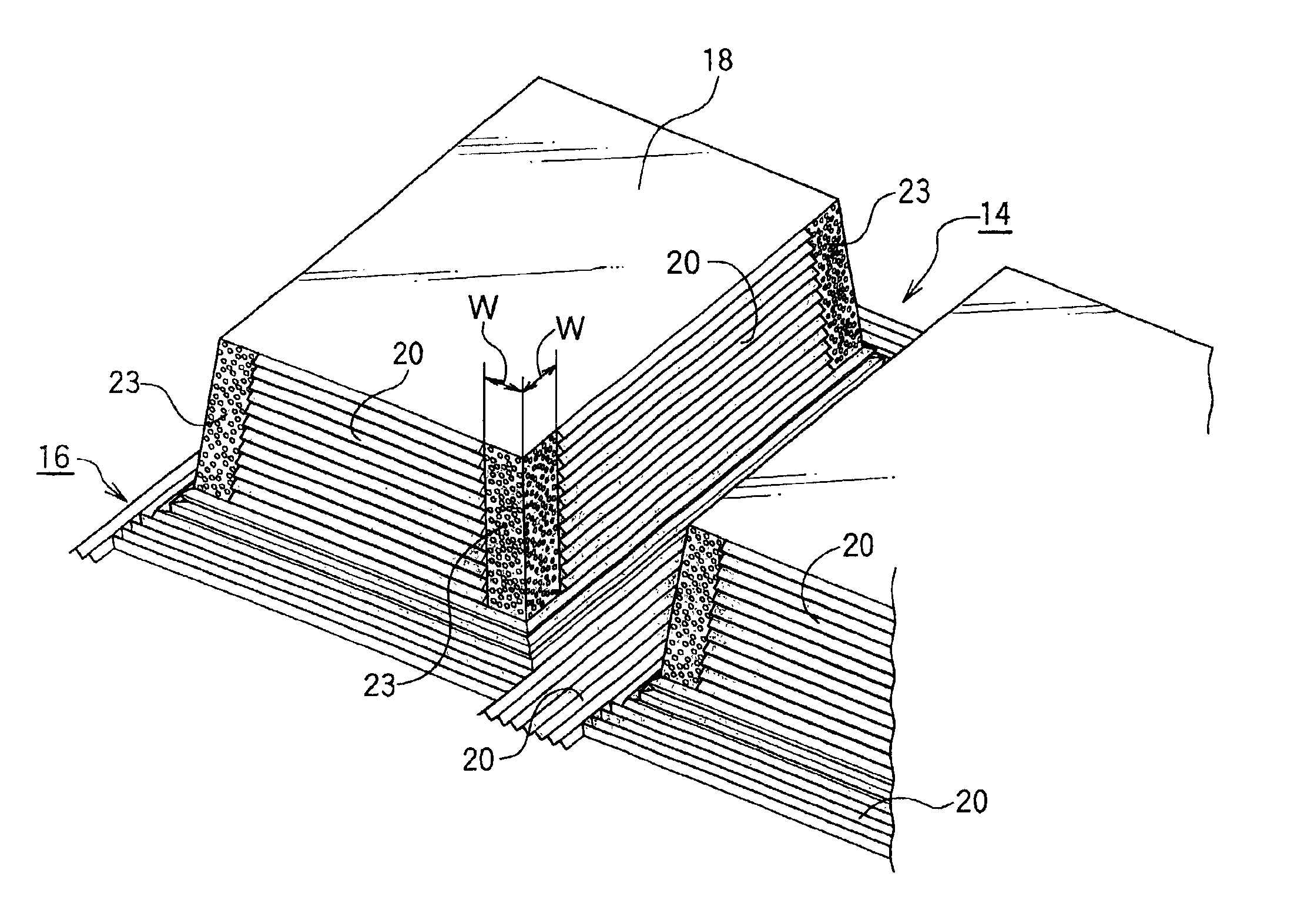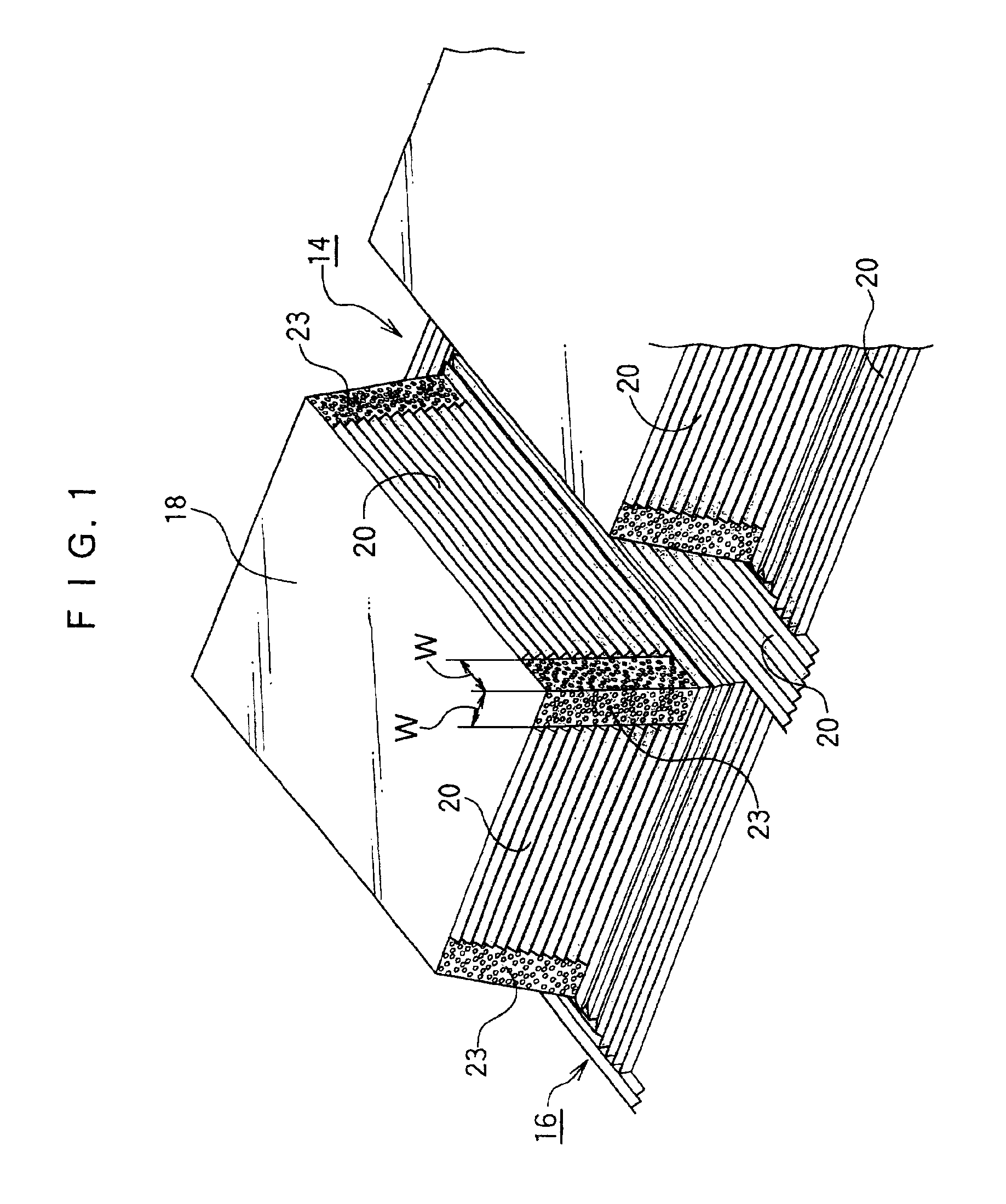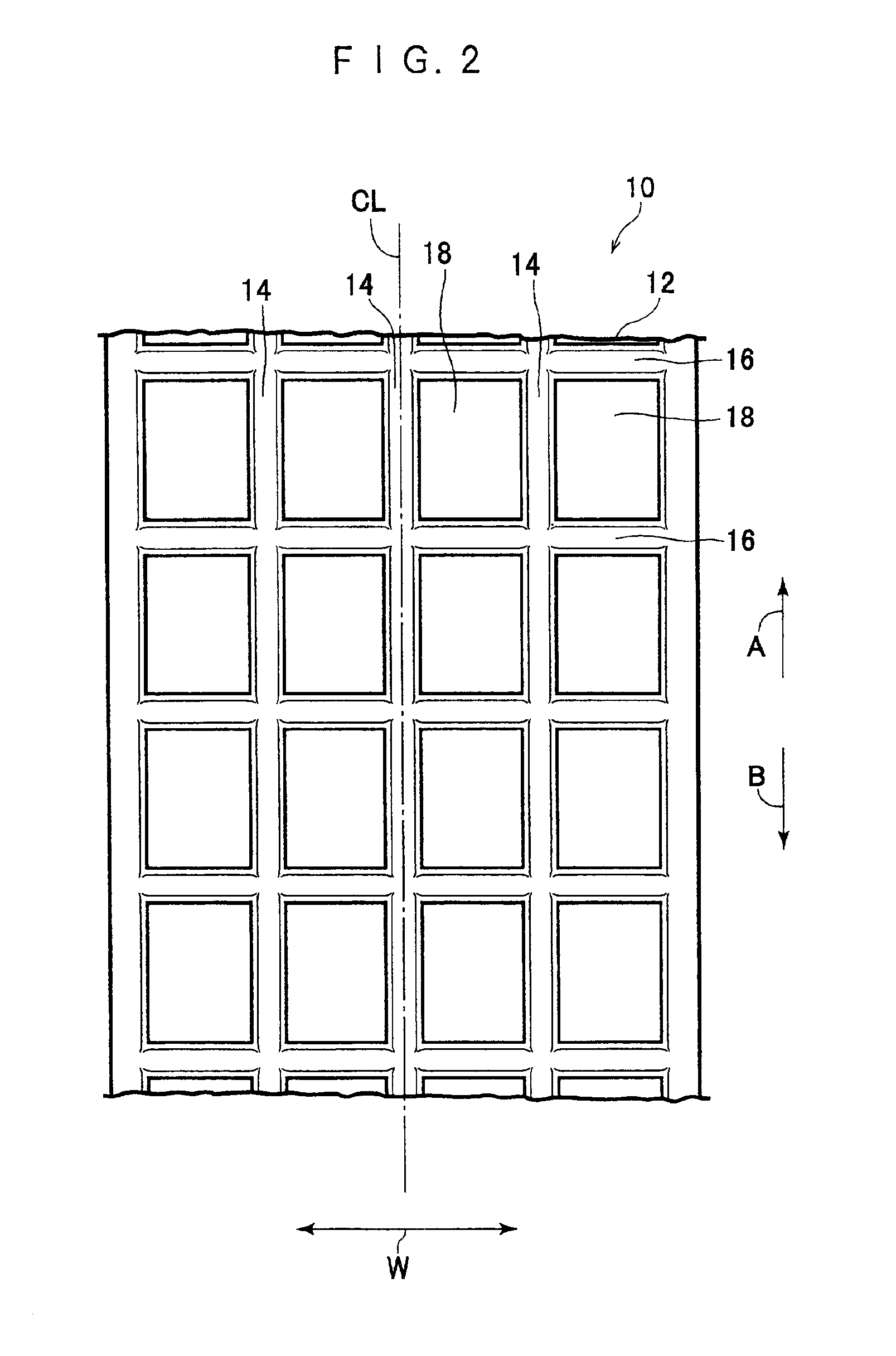Tire having longitudinally extending smaller grooves formed in the walls of a groove
a technology of groove walls and grooves, applied in the field of tires, can solve the problems of increasing the surface area of grooves and disturbing the improvement of anti-hydroplaning performance, and achieve the effect of excellent wet performance and high hydroplaning occurrence ra
- Summary
- Abstract
- Description
- Claims
- Application Information
AI Technical Summary
Benefits of technology
Problems solved by technology
Method used
Image
Examples
first embodiment
A first embodiment of the tire of the invention will be described with reference to FIGS. 1 to 4.
As shown in FIG. 2, a tire 10 is provided at its tread 12 with a plurality of blocks 18 which are defined by a plurality of circumferential grooves 14 extending in the tire circumferential directions (i.e., in the direction of arrow A and in the direction of arrow B) and a plurality of transverse grooves 16 intersecting those circumferential grooves 14.
The tire 10 of this embodiment has an internal structure identical to that of the normal (pneumatic) tire so that the description on the internal structure will be omitted. Here, the tire 10 of this embodiment is a pneumatic tire but could be applied to a tire (e.g., a solid rubber tire) other than the pneumatic tire.
As shown in FIG. 1, riblets 20 are formed individually on the side and bottom walls of each circumferential groove 14 and on the side and bottom walls of each transverse groove 16.
In the riblets 20 of this embodiment, as shown...
second embodiment
A tire according to a second embodiment of the invention will be described with reference to FIG. 5. Here is omitted the description of the same components as those of the foregoing embodiment by designating the components by the common reference numerals.
In the tire 10 of this embodiment, the turbulence generating zone 23 is provided at the groove sides on the tread surface side of the predetermined width W, as shown in FIG. 5, in addition to the confluence between the circumferential groove 14 and the transverse groove 16.
(Actions)
When the tire 10 runs on a wet road surface so that the water on the road surface comes through the openings in the tread into the circumferential groove 14 and the transverse groove 16, turbulent flows are established in the water flowing in the vicinities of the grooves sides by the numerous pointed projections 24 near the openings. As a result, the separation of the coming water can be suppressed to allow the water on the road to flow with a lower res...
third embodiment
A tire according to a third embodiment of the invention will be described with reference to FIG. 6. Here is omitted the description of the same components as those of the foregoing embodiments by designating the components by the common reference numerals.
The tread pattern of the tire 10 of this embodiment is a rib pattern so that the tread 12 is provided exclusively with the circumferential grooves 14 having the riblets 20, as shown in FIG. 6.
In the tire 10 of this embodiment, the resistance experienced at the circumferential grooves 14 can be reduced as in the foregoing embodiments so that the wet performance can be improved better than the tire of the rib pattern of the prior art.
PUM
 Login to View More
Login to View More Abstract
Description
Claims
Application Information
 Login to View More
Login to View More - R&D
- Intellectual Property
- Life Sciences
- Materials
- Tech Scout
- Unparalleled Data Quality
- Higher Quality Content
- 60% Fewer Hallucinations
Browse by: Latest US Patents, China's latest patents, Technical Efficacy Thesaurus, Application Domain, Technology Topic, Popular Technical Reports.
© 2025 PatSnap. All rights reserved.Legal|Privacy policy|Modern Slavery Act Transparency Statement|Sitemap|About US| Contact US: help@patsnap.com



